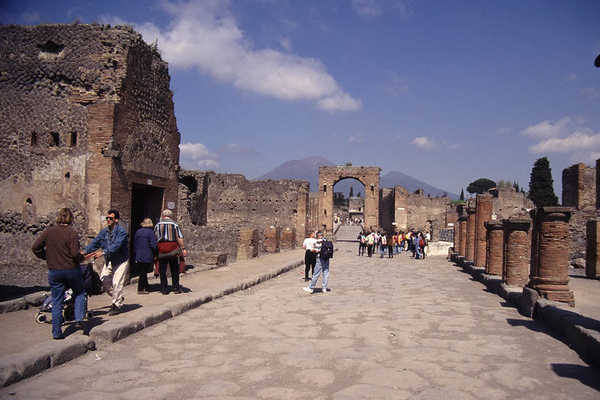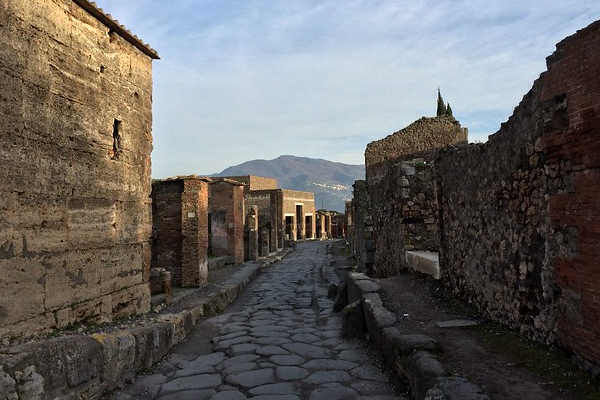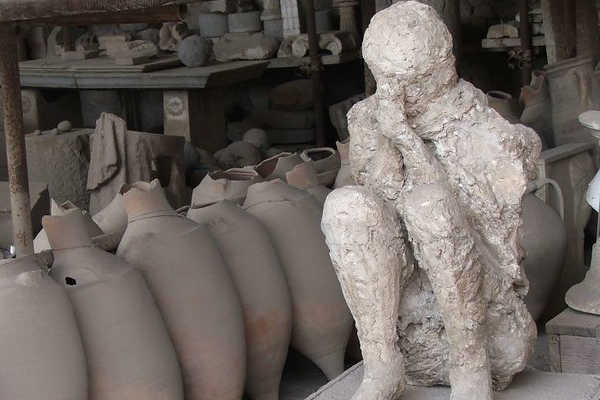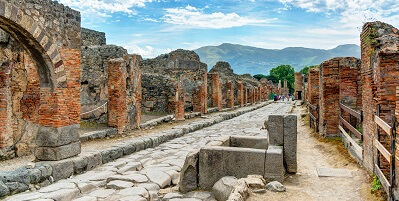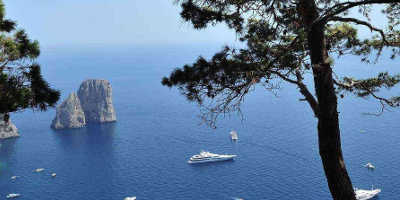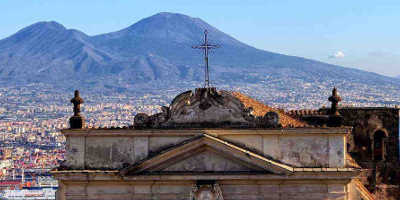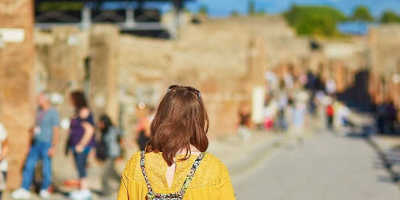The Archaeological Site of Pompeii
Pompeii is known throughout the world as not only a destination but also an hostoric event.
In 79 AD this once-thriving city on the west coast of Italy was buried beneath a thick layer of ash and stone as the nearby volcano, Mount Vesuvius erupted. Although having occurred almost two millennia ago, the eruption resulted in an unprecedented preservation of the town including its buildings and, in some cases, its inhabitants.
History of the Archaeological Site of Pompeii
While the facts of the eruption come to mind when thinking of Pompeii, the town actually had a rich history stretching back further than the volcanic tragedy. The city of Pompeii is well over 2500 years old and has much to discover.
Founded in the 7th Century BC by the Oscans, this town sat at the heart of an important crossroads between the Greek towns of Cumae, Nola and Stabiea. Thus began the battles for this tactically placed town, because it acted as a central hub to the surrounding towns. The 5th century saw Pompeii fall to the Samnites, who immediately began to develop the town, evidence of which can still be seen today in the architecture. In fact, it wasn’t until 80 BC that it became a Roman Colony.
While many people look back at the city and relate it only to the eruption of Vesuvius in, this was not the only hardship that the people of Pompeii endured. A mere 17 years before the eruption the city’s very foundations were put to the test by a major earthquake. While it may have seemed to be a great tragedy at the time, some might say that it was a blessing in disguise. The reason for this is that a large majority of the city’s 20 000 people evacuated. Even though it was almost 2 decades until the eruption took place, families had set up their lives in the various surrounding towns and cities and saw no reason to return. This meant that only 2000 people lost their lives to Vesuvius and unknowingly became a part of Roman history.
The Rediscovery of Pompeii
Naturally, many thought that the eruption had completely wiped the city from existence, resulting in Pompeii being all but forgotten. It wasn’t until 1599 that the remains of Pompeii were finally uncovered. An architect by the name of Domenico Fontana came across the ruins as he was digging a new course for the River Sarno in Pompeii’s ruins. However, Fontana merely looked at the artefacts and ruins before burying them once more. Historians have speculated that this was due to Fontana finding the famous erotic frescos of Pompeii, which would have been shocking at the time.
Another discovery of Pompeii wasn’t made until a couple of hundred years later. In 1748 a group of explorers, led by a surveying engineer named Rocco Gioacchino de Alcubiere, went out in search for ancient artefacts under the King of Naples, Charles Bourbon’s command. This led to the first official excavation of Pompeii. After this point royals began to continuously order digs to plunder the area for ancient decorations worthy of their palaces. It was not until the 1800s that archaeologists started studying the area correctly as not to damage any remaining ruins.
What diggers found beneath the surface can still be seen today; ancient roman streets, houses, temples, shops, cafes and an amphitheater. Even to this day, only two thirds of the city has been uncovered, and even less is open to the public.
The Archaeological Site Today
Since its very first excavation, Pompeii has been the longest continually excavated site ever found. It is still a mystery in some areas, with a whole third of the city still buried. Archaeologists continue to search for new finds while the already discovered sections are open to visitors.
-
The People of Pompeii
The most shocking discovery by far is the preserved bodies of the 2000 victims of Pompeii. Although their physical bodies were destroyed or decayed over time, their skeletons remained intact, leaving the negatives of each body. There are many plaster casts of the bodies on display, with theories surrounding each body’s past life.
-
The Buildings
Temples, shops, cafes, bathhouses and homes have all been discovered in the city. One of the biggest finds was the city’s amphitheatre, so big it could house 2000 people effortlessly. The buildings illustrate Pompeii’s incredible history, showing the wealth, class separation, and everyday habits of the city’s citizens.
-
The Art
Despite the theft of a lot of significant artefacts, a large portion of art still lies within the city’s walls. With preserved frescos, sculptures, bowls, jewelry, and even ancient graffiti. The city’s preserved frescos and mosaics scattering the city are one of the most visited sections. With brilliant colours unfaded from age, illustrating myths, erotica, religion, sport, and war.
-
The Unique Objects
There are some discoveries which have made archaeologists jaw’s drop. Strange artefacts that are a haunting reminder of the fascinating and developed city that Pompeii was. Such artefacts include the Cave Canem mosaic; a mosaic displayed on a home’s outside wall, translating to ‘beware of the dog’ in Latin. This is just one of the dog signs found throughout the area, a strange thing to see in ancient times! Another fascinating unearthing was the findings of a giraffe bone. It is the only giraffe bone found in Roman Italy, illustrating Pompeii’s taste for exotic foods.
Drawing thousands of travellers from around the world annually, Pompeii is a must-see destination that is well worth the stopover during your holiday in Southern Italy. Step back in time and marvel at the world of this ancient Roman city.

